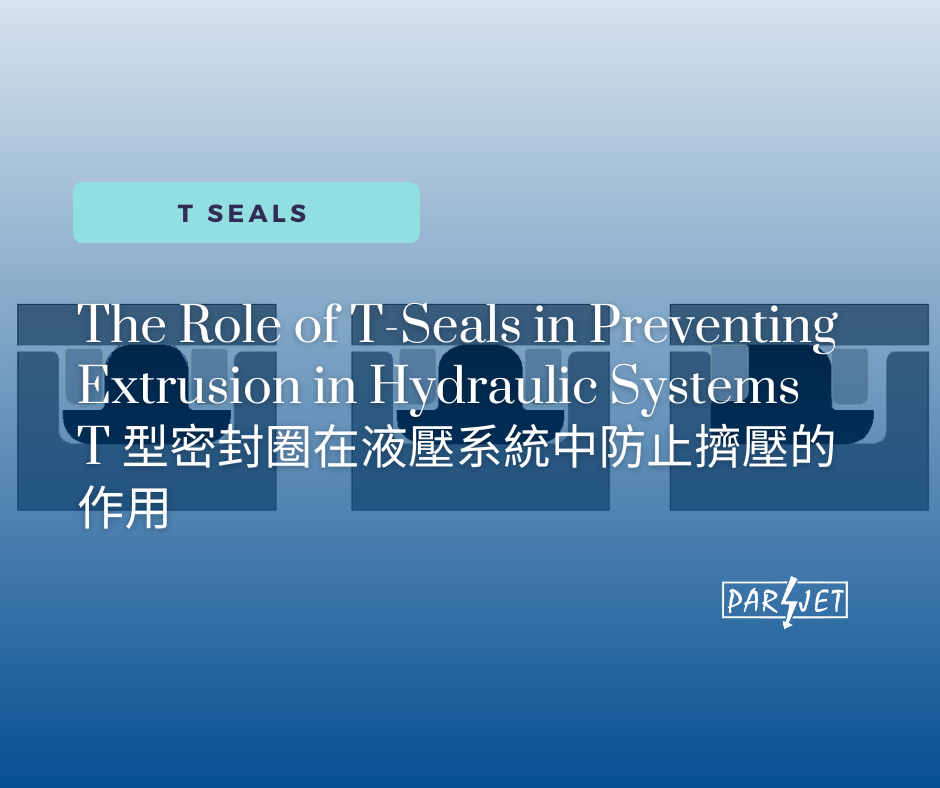The Role of T-Seals in Preventing Extrusion in Hydraulic Systems
Hydraulic systems are the backbone of modern machinery, powering everything from industrial presses to aircraft controls. These systems rely heavily on seals to maintain efficiency and prevent leaks. One of the greatest challenges in high-pressure hydraulic systems is extrusion, where seals are forced into the gap between mating surfaces, leading to damage and eventual failure.
This is where T-seals shine. Their unique design and robust construction make them an excellent solution for preventing extrusion in demanding hydraulic applications. Let’s dive into how T-seals play a pivotal role in maintaining the integrity of hydraulic systems.
What Is Extrusion in Hydraulic Systems?
Extrusion occurs when a seal is exposed to high pressure and forced into the clearance gap between the piston and cylinder or other mating components. This can lead to:
- • Seal damage: Material deformation or tearing.
- • System inefficiency: Leaks due to compromised seals.
- • Downtime and maintenance costs: Frequent replacements and repairs.
Extrusion is especially common in dynamic applications where movement exacerbates the stress on seals.
How T-Seals Combat Extrusion
T-seals are specifically designed to address extrusion challenges with the following features:
1. Backup Rings on Both Sides
T-seals incorporate backup rings made of durable materials such as PTFE or polyurethane. These rings:
- • Act as physical barriers, preventing the elastomer from being forced into the gap.
- • Distribute pressure evenly, reducing localized stress on the seal.
This dual-ring design significantly enhances the seal’s extrusion resistance compared to traditional O-rings.
2. T-Shaped Cross-Section
The T-shaped elastomer provides additional stability within the groove.
- • The base of the “T” pushes firmly against the groove, creating a reliable static seal.
- • The vertical portion maintains dynamic stability, preventing the twisting and rolling that can exacerbate extrusion in O-rings.
3. Adaptive Performance Under Pressure
As pressure increases, the backup rings are forced more firmly against the extrusion gap. This self-activating mechanism ensures that the seal performs reliably even in high-pressure conditions.
Advantages of T-Seals in Hydraulic Systems
Using T-seals in hydraulic systems offers multiple benefits:
- • Enhanced Reliability: With extrusion effectively mitigated, hydraulic systems can operate longer without leaks.
- • Extended Seal Life: T-seals are less prone to damage, reducing the frequency of replacements.
- • Cost Savings: Lower maintenance requirements and fewer unplanned downtimes translate to significant savings.
- • Broad Applicability: T-seals perform well in both static and dynamic applications, making them versatile for various hydraulic components.
Applications of T-Seals in Hydraulic Systems
T-seals are commonly used in:
- • Hydraulic cylinders: Preventing leakage and extrusion in pistons and rods.
- • Valves and pumps: Ensuring seals maintain integrity under pressure fluctuations.
- • High-pressure systems: Where extrusion risks are particularly pronounced, such as industrial machinery and heavy equipment.
Conclusion
In hydraulic systems, extrusion poses a significant challenge that can compromise performance and lead to costly downtime. T-seals, with their innovative design and reliable construction, offer an effective solution to this problem. By incorporating T-seals into your hydraulic systems, you can ensure better performance, longer seal life, and greater operational efficiency.
If you’re facing extrusion challenges in your hydraulic systems, consider upgrading to T-seals. Contact us today to find the perfect T-seal for your application!






